 W
WAlexander Emmanuel Rodolphe Agassiz, son of Louis Agassiz and stepson of Elizabeth Cabot Agassiz, was an American scientist and engineer.
 W
WAnastasio Alfaro was a Costa Rican zoologist, geologist and explorer.
 W
WPer Olof Christopher Aurivillius was a Swedish entomologist.
 W
WAnton Ausserer was an Austrian naturalist specialising in spiders. His father died when he was a youth, and he and his family suffered much economic hardship, but he was supported and encouraged by Camill Heller, professor of Zoology and Comparative Anatomy at the University of Innsbruck.
 W
WMary Ball (1812–1898) was an Irish naturalist and entomologist most noted for her studies of Odonata and for her discovery of the stridulation in aquatic bugs in the family Corixidae.
 W
WPieter Bleeker was a Dutch medical doctor, ichthyologist, and herpetologist. He was famous for the Atlas Ichthyologique des Indes Orientales Néêrlandaises, his monumental work on the fishes of East Asia published between 1862 and 1877.
 W
WJonas Axel Boeck was a Norwegian marine biologist.
 W
WGeorge Albert Boulenger was a Belgian-British zoologist who described and gave scientific names to over 2,000 new animal species, chiefly fish, reptiles, and amphibians. Boulenger was also an active botanist during the last 30 years of his life, especially in the study of roses.
 W
WFriedrich Moritz Brauer was an Austrian entomologist who was Director of the Naturhistorisches Hofmuseum, Vienna, at the time of his death. He wrote many papers on Diptera and Neuroptera.
 W
WHenry Wilfred Brolemann was a French myriapodologist and former president of the Société entomologique de France known for major works on centipedes and millipedes, of which he named some 500 species. Brolemann was born July 10, 1860, in Paris, to a wealthy family of Israelite industrialists and bankers that had long since converted to Protestantism. He graduated from the University of Paris and was in the banking business early in life, then left for studies in the United States, including at Indiana University, and then studied in Italy before returning to France and becoming one of the world's experts in myriapods. Brolemann was fluent in English, German and Italian, and wrote in Spanish and Portuguese.
 W
WHenry Bryant was an American physician and naturalist. He was the grandfather of Henry Bryant Bigelow.
 W
WPhilip Powell Calvert was an American entomologist, recognised as a leading authority on the Odonata.
 W
WAlphonse Louis Pierre Pyramus de Candolle was a French-Swiss botanist, the son of the Swiss botanist Augustin Pyramus de Candolle.
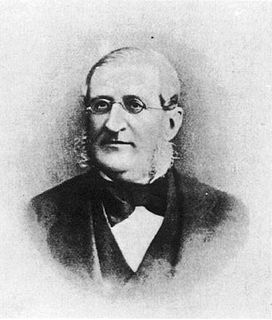 W
WMaximilien Chaudoir, or Maximilien, baron de Chaudoir, was a Russian entomologist. He was a specialist in Coleoptera and in particular the Carabidae. His Cicindelidae are conserved by the Muséum national d'histoire naturelle in Paris. His Carabidae were acquired by Charles Oberthür (1845–1924), then given to the same museum. He wrote Mémoire sur la famille des Carabiques, 6 volumes commencing 1848.
 W
WEugen von Daday or Jenő von Daday (1855–1920) was a Romanian professor of zoology in Hungary in the late 19th and early 20th century. Daday was an expert on aquatic invertebrates, particularly crustaceans. Daday collected and identified many species and genera within the borders of the Hungarian empire, and received samples of invertebrates from collectors around the world. After his death in 1920, Daday's collection of crustaceans was acquired by the Hungarian Natural History Museum.
 W
WDaniel Frederik Eschricht was a Danish zoologist, physiologist, and anatomist known as an authority on whales. He was born in Copenhagen, and studied medicine at Frederiks Hospital, graduating in 1822. He was a student of François Magendie in Paris from 1824-1825, composing a thesis on cranial nerves, after which he studied with prominent European naturalists and anatomists, including Georges Cuvier. He joined the University of Copenhagen in 1829, becoming Professor of Anatomy and Physiology in 1836. The gray whale genus Eschrichtius was named for him a year after his death. In 1861, Eschricht dissected an orca and found thirteen common porpoises and fourteen seals inside. Jules Verne referred to the incident in the Sargasso chapter of Twenty Thousand Leagues Under the Sea.
 W
WJohann Friedrich Gustav von Eschscholtz was a Baltic German physician, naturalist, and entomologist. He was one of the earliest scientific explorers of the Pacific region, making significant collections of flora and fauna in Alaska, California, and Hawaii.
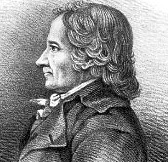 W
WJohan Christian Fabricius was a Danish zoologist, specialising in "Insecta", which at that time included all arthropods: insects, arachnids, crustaceans and others. He was a student of Carl Linnaeus, and is considered one of the most important entomologists of the 18th century, having named nearly 10,000 species of animals, and established the basis for the modern insect classification.
 W
WLeopold Joseph Franz Johann Fitzinger was an Austrian zoologist.
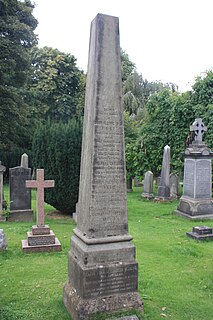 W
WRev Prof John Fleming DD FRSE FRS FSA was a Scottish Free Church minister, naturalist, zoologist and geologist. He named and described a number of species of molluscs. During his life he tried to reconcile theology with science.
 W
WArturo Issel was an Italian geologist, palaeontologist, malacologist and archaeologist, born in Genoa. He is noted for first defining the Tyrrhenian Stage in 1914. Issel was also renowned at the time for his work on codifying information within anthropology and ethnology, for which he is still remembered.
 W
WJoseph "Krystel" Franz Freiherr von Jacquin or Baron Joseph von Jacquin was an Austrian scientist who studied medicine, chemistry, zoology and botany. The standard author abbreviation J.Jacq. is used to indicate this person as the author when citing a botanical name.
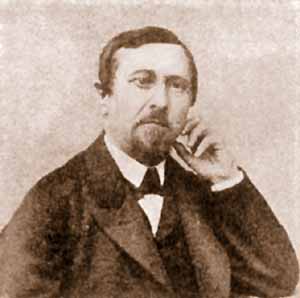 W
WKarl Fedorovich Kessler was a German-Russian zoologist and author of zoological taxa signed Kessler, who was mostly active in Kiev, Ukraine and conducted most of his studies of birds in Ukrainian regions of the Russian Empire - Kiev Governorate, Volyn Governorate, Kherson Governorate, Poltava Governorate and Bessarabia. He also studied the fish of the Dniester, Dnieper, and Southern Bug rivers, and on the Ukrainian coast of the Black Sea.
 W
WFriedrich Carl Knauer was an Austrian zoologist.
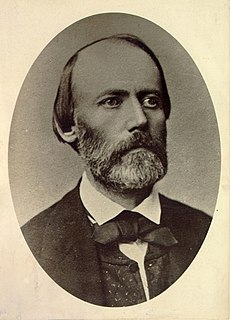 W
WJulius Lederer was an Austrian entomologist who specialised in Lepidoptera. He travelled widely: to Andalusia in 1849 Carinthia with Johann von Hornig (1819–1886) in 1853, İzmir in 1864, Magnesia in 1865, Amasya and Turkey in 1866, Mersin and the Taurus Mountains in 1867, Lebanon in 1868 and the Balkans in 1870).
 W
WProf Sven Ludvig Lovén, was a Swedish marine zoologist and malacologist. The Sven Loven Centre for Marine Sciences within the University of Gothenburg was named in his honour.
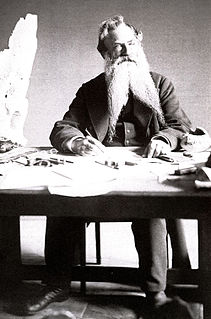 W
WAugust Wilhelm Malm was a Swedish zoologist, entomologist and malacologist. He was the first Director of the Gothenburg Natural History Museum.
 W
WGeorge Marx was a German-born American arachnologist, scientific illustrator and physician. He was regarded as one of the foremost authorities on spiders and highly regarded for his superb scientific illustrations.
 W
WLudwik Franciszek Młokosiewicz was a Polish explorer, zoologist and botanist, who studied extensively in the Caucasus Mountains. He is one of the sons of Franciszek Młokosiewicz.
 W
WAlexander Mocsary, sometimes Hungarian: Mocsáry Sándor was a Hungarian entomologist who specialised in Hymenoptera.
 W
WFr. Juan Ignacio Molina was a Spanish, later Chile an, Jesuit priest, naturalist, historian, translator, geographer, academic, botanist, ornithologist, polymath, professor, scientific, and linguist. He is usually referred to as Abate Molina, and is also sometimes known by the Italian form of his name, Giovanni Ignazio Molina.
 W
WJames A. Murray was a British 19th century zoologist, taxidermist, and museum curator in Karachi.
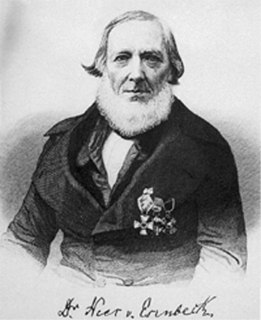 W
WChristian Gottfried Daniel Nees von Esenbeck was a prolific German botanist, physician, zoologist, and natural philosopher. He was a contemporary of Goethe and was born within the lifetime of Linnaeus. He described approximately 7,000 plant species. His last official act as president of the German Academy of Natural Scientists Leopoldina was to admit Charles Darwin as a member. He was the author of numerous monographs on botany and zoology. His best-known works deal with fungi.
 W
WArthur Sidney Olliff, was an Australian taxonomist who was active as Government entomologist in New South Wales. He came to Australia in December 1844 to work at the Australian Museum.
 W
WAlcide Charles Victor Marie Dessalines d'Orbigny was a French naturalist who made major contributions in many areas, including zoology, palaeontology, geology, archaeology and anthropology.
 W
WJohann Baptist Emanuel Pohl was an Austrian botanist, entomologist, geologist, mineralogist, and physician.
 W
WStanislaus Josef Mathias von Prowazek, Edler von Lanow, born Stanislav Provázek, was a Czech zoologist and parasitologist, who along with pathologist Henrique da Rocha Lima (1879-1956) discovered the pathogen of epidemic typhus.
 W
WAnders Jahan Retzius was a Swedish chemist, botanist and entomologist.
 W
WProf Georg Ossian Sars HFRSE was a Norwegian marine and freshwater biologist.
 W
WBaron Michel Edmond de Selys Longchamps was a Belgian Liberal Party politician and scientist. Selys Longchamps has been regarded as the founding figure of odonatology, the study of the dragonflies and damselflies. His wealth and influence enabled him to amass one of the finest collections of neuropteroid insects and to describe many species from around the world. His collection is housed in the Royal Belgian Institute of Natural Sciences.
 W
WDr. Agustín Stahl was a Puerto Rican medical doctor and scientist with diverse interests in the fields of ethnology, botany, and zoology. He advocated Puerto Rico's independence from Spain.
 W
WFranz Steindachner was an Austrian zoologist, ichthyologist, and herpetologist. He published over 200 papers on fishes and over 50 papers on reptiles and amphibians Steindachner described hundreds of new species of fish and dozens of new amphibians and reptiles. At least seven species of reptile have been named after him.
 W
WCarl Jakob Sundevall was a Swedish zoologist. Sundevall studied at Lund University, where he became a Ph.D. in 1823. After traveling to East Asia, he studied medicine, graduating as Doctor of Medicine in 1830.
 W
WSir Charles Wyville Thomson was a Scottish natural historian and marine zoologist. He served as the chief scientist on the Challenger expedition; his work there revolutionised oceanography and led to his knighthood.
 W
WAlfred Jefferis Turner was a pediatrician and noted amateur entomologist. He was the son of missionary Frederick Storrs-Turner. He introduced the use of diphtheria antitoxin to Australia in 1895. He was known by the nickname "Gentle Annie".
 W
WDomenico Agostino Vandelli was an Italian naturalist, who did most of his scientific work in Portugal.
 W
WGualtherus Carel Jacob Vosmaer
 W
WConstantin Wesmael was a Belgian entomologist.
 W
WEdward Percival (Perceval) Wright FRGSI was an Irish ophthalmic surgeon, botanist and zoologist.
 W
WFrederik Maurits van der Wulp was a Dutch entomologist mainly interested in Diptera.
 W
WJohn Xantus de Vesey a.k.a. de Csíktaplócza was a Hungarian exile and zoologist. Xantus was born Xántus János, in Csokonya, Somogy, Hungary.
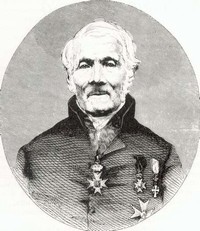 W
WJohan Wilhelm Zetterstedt was a Swedish naturalist who worked mainly on Diptera and Hymenoptera.